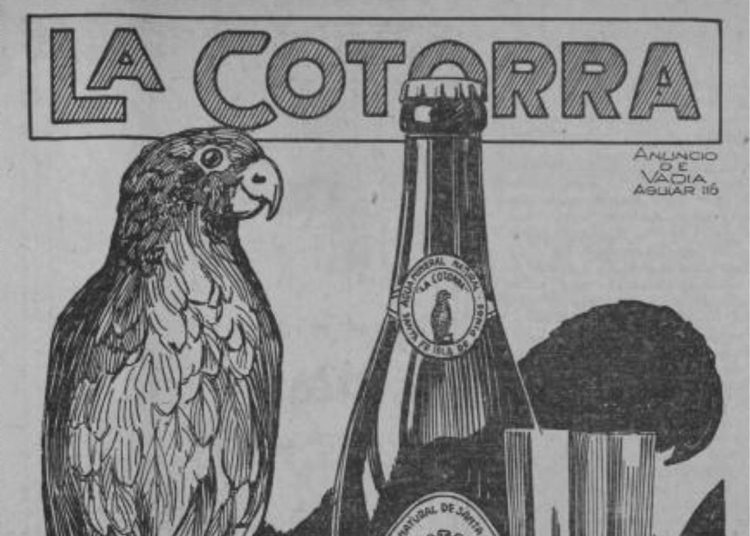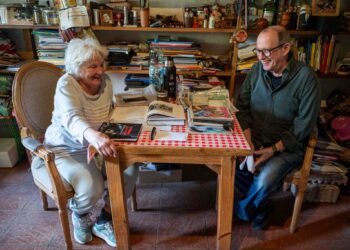Since the 19th century, Cuba was famous for the various water spas with medicinal properties located in Isla de Pinos, Madruga, Santa María del Rosario, San Diego de los Baños, Ciego Montero, Amaro, Marianao and San Rafael de Camujiro (in Puerto Príncipe), just to mention a few.
The bottled mineral water market, however, was dominated by foreign factories that exported this product to the island at high prices, inaccessible to the majority of the population.
To “resolve” many carried the precious liquid in jugs from the springs. At the beginning of the new century, this situation would change. It was a process of sustained growth. In 1956 there were 27 registered trademarks and of these medium and small companies, 11 belonged to the municipality of Guanabacoa, in Havana.
Among the group of entrepreneurs dedicated to this industry, the Galician immigrant Claudio Conde Cid stood out. He arrived in Cuba at the age of 15 and founded La Cotorra, the most popular brand.
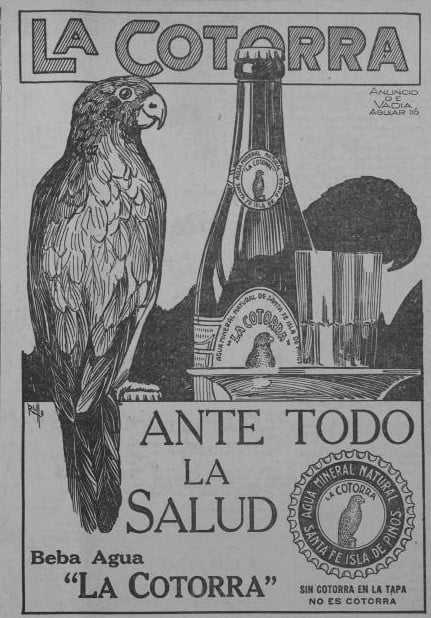
Antecedents
Claudio started in the business in 1905. He then sold in Havana the liquid that he brought from some springs on the Isla de Pinos. That is the year recognized as the founding date of the Aguas La Cotorra company, some sources report that he also used the La Vida brand. However, during our research, we have not found references, in primary sources, in this regard.
But we did specify, when consulting the Diario de la Marina, that in 1912 it used the name that made it popular and is due to the bird of the same name that was abundant where the venture began.
Two years later, on June 15, the aforementioned newspaper warned consumers about unscrupulous competition: “Very important notice…. For some time now, taking advantage of the legitimacy of the natural mineral water of Isla de Pinos, the one that Claudio Conde imports directly from the famous Agua Santa spring, in Santa Fe, which has made that island famous. We recommend that consumers not be fooled and pay close attention to the cap and label of the bottles show off a parrot. If they do not have the parrot, Agua Santa is not legitimate…reject this imitation with indignation and to avoid surprises.”
Claudio, who was also the representative and sole importer in Cuba of the English beers Dog’s Head Bass and Guinness, to ensure his venture, bought from Genaro Suárez, on September 9, 1914, the brands and his possession of the mineral waters. from the Isla de Pinos. They would be marketed under the names La Cotorra, Buena Vista and Conde. He also acquired a more modern ship to guarantee the transfer of merchandise to Surgidero de Batabanó and also used it, starting in 1915, to transport passengers.
In 1915 he began home deliveries in Havana, at no additional cost, with vehicles he owned. He distributed demijohns at a reasonable price. It seems that the demand was so great that the liquid originating from the Isla de Pinos was not enough. In that year he bought from Leonardo Plaza and Francisco Palacios two plots of land in Guanabacoa, in a place called La Ceiba, and he also acquired the land where there were springs of drinking water called Chorrito del Cura or Bohemia, in Loma de la Cruz.
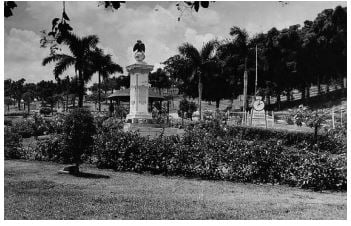
Business continued on the rise. La Cotorra won a Grand Prize at the international exhibition held in Panama in 1916. The advertisements, starting this year, omitted the origin of the Isla de Pinos. It is said that to comply with the orders he acquired water from other springs located in Havana, especially in Madruga, along with those in Guanabacoa, where he began an investment process to multiply production.
The company had its headquarters and the bottling plant at No. 4 San Felipe, Jesús del Monte, at the beginning of the 1920s. Joaquín Otero, head of propaganda, was not satisfied with the usual means of advertising, he organized tours of the facilities and then took the visitors, in groups, to see the springs in Guanabacoa.
From the bowels of the rocks
The chronicle published in the Diario de la Marina, on October 24, 1923, where it narrated what happened during one of these excursions, offers details of the production process:
“The students first visited the catchment of the springs that are made with marble and crystals and on which you can read the names of each of them, in the background El Indio, on the right La Vida and on the left La Cotorra. Afterwards, the purification and sterilization department was visited, still unfinished and where a large ultraviolet ray plant and three enormous completely closed automatic filters operate. Beautiful gardens surround the different buildings of the springs, where the same truly picturesque places exist.…”
Around that time, the people began to call the site, until then called Loma del Indio or de la Cruz, La Cotorra. Camila Lorenzo says that “in search of greater volumes of water…, the construction of a system of tunnels or percolation galleries, with a length greater than one kilometer, was carried out within the core of the hill to capture the waters from cracks as a source of supply for the plant. Along with Lobatón, Fuente Blanca, and San Agustín, it is perhaps the only example of this type of work in Cuba that proves to be appropriate for these purposes in this type of rocks and relief.”
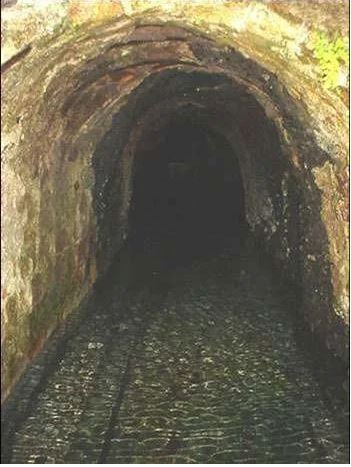
To differentiate itself from other brands, La Cotorra announced that its seven springs were found in living rock and this catchment was considered by specialists to be the best in the Americas. In 1918, the Bacteriology Department of the National Laboratory certified the quality of the company’s waters.
When the road that connects Guanabacoa with Regla was rebuilt, the industry benefited, not only did the transportation of liquid improve, but also access to the halls built in the gardens where dances, banquets, club meetings and other social events were continually held. They were very famous, like those of the La Polar and La Tropical breweries. In addition, the green areas were visited for excursions, to enjoy a playground, plant trees, among other attractions. It was the headquarters of the innovative Outdoor Drawing and Painting School, financially supported by Conde. All this without neglecting the quality of the flagship product. In this regard, researcher Rafael Aquino Guerra tells us in his study “The La Cotorra complex, splendor of water culture in Guanabacoa”:
“From December 8, 1923, file no. 43, in which the water from the La Cotorra springs is classified as first category and its use is authorized, after the inspection carried out by the health department of the government of the time, was concluded. Their beneficial application was recognized in them, since they eradicated the functional disorders of the digestive system and any dyspepsia that occurred, in addition to benefiting any nutritional disorder by supplying alkaline and a predominant content of sodium, iron and calcium salts, and they also favored kidney purification.
“Around 1926, the technical management of the industry equipped the plant with a laboratory with the best of the time for analyzing the suitability of the liquid. Consequently, the water reached the market after a hygienic and scrupulous process, so its uniform quality was optimal.”
In the 1940s, new investments increased productive capacity. It had 42 trucks for distribution, seventy-nine branches in the country and in 1959 it produced approximately twenty million bottles of water per year.
Until now, it is unknown when Claudio Conde Cid emigrated to Cuba, nor do we know if he went to Spain already at the twilight of his fruitful life, after converting a small business into a national industry.
________________________________________
Sources:
Guillermo Jiménez Soler: Las empresas de Cuba. 1958, Ciencias Sociales publishers, Havana, 2014.
Rafael Aquino Guerra: “El conjunto La Cotorra, esplendor de la cultura del agua en Guanabacoa,” National Archive Bulletin, 2008-2009.
https://medium.com/tucuba/historia-y-misticismo-de-la-loma-de-la-cruz-en-guanabacoa-f736706cd089
Diario de la Marina
Eco de Galicia

